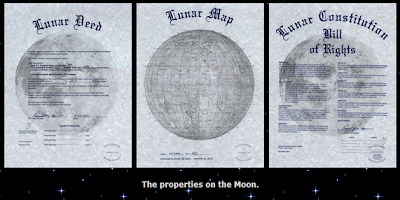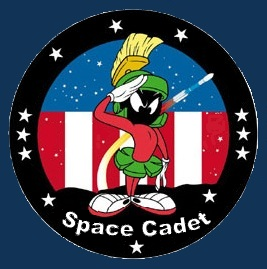You've probably heard of Dennis Hope, the man who claimed the Moon and has been selling acreage there since 1980. If you haven't, you're missing one of the greatest crackpot success stories of all time. Con artist? Smartest dude, EVER? Hmm...
"Get off my lawn!"
Over three decades ago, Dennis Hope wrote to the United Nations, pointing out that the Outer Space Treaty does not specify that corporations or individuals cannot lay claim to lunar territory. Of course, the assertion is absurd, and if put to a point of law in court, his proclaimed "loophole" would easily be declared invalid among laughter in about 200 different languages.
The 1967 treaty forbids national governments from owning property in space as an early preventative measure against attempted militarization; space, like the Earth's oceans, is common property intended for the free use by all Earthlings. Still, since his initial letter (which garnered no response), the self-titled entrepreneur announced he has secured legal ownership of just about every other celestial body in our solar system, too.
Hey, if you're going to worship at the altar of crazy, you may as well be the high'n'mighty god of your newly created religion, right?
Among the many buyers who have lined Hope's pockets? Three ex-presidents. Big-name Scientologist actors. All in all, millions of acres has resulted in Hope making millions of dollars.
Click to see what's already sold.
Incredibly, his lunar real estate development company -- which he refers to as the "Lunar Embassy" -- now consists of 3 full-time employees, 27 resellers, and 6 ambassadors! They take Visa, MasterCard, AmEx, Discover and Diner's Club credit cards for all products.
When you purchase a lunar plot (a quite reasonably priced acre, in my opinion), you get a map of your particular location, a fancy parchment deed, and a copy of the Lunar Constitution, detailing the Moon's Bill of Rights and the "all important laws of THE HEAD CHEESE , the omnipotent ruler of the Moon" (seriously).
Our Moon Landlord calls the sales packages "novelty gifts" to avoid lawsuits, but zestily disputes other ownership claims from around the world, calling similar companies or individuals "criminals" and "pretenders".
Yours for only $34.00, with 30-day Guarantee
Happily, even if you've managed not to hear of Dennis Hope before, a filmmaker has created a documentary about him. The aptly titled "LUNARCY" will debut on EPIX next week on April 3rd.
I for one think this is awesome (hey, whatever kinda looneysicle he chooses to be, no one's ever made a documentary about ME, so who am I to talk, right?), and I plan to watch, because he also claims that his Galactic Government can solve Federal Deficit problem! Can't wait.






















































































